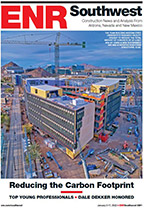He also liked to build. For a science fair, he made a plastic-and-cardboard model of a nuclear reactor.
Selkowitz says his appreciation for the environment grew from summers spent exploring Peaks Island, off the Maine coast, where he and his younger sister, Harriet, stayed with their late aunt Fannie Chude. In addition to his father and his late mother Ida, Chude was a role model. She had a PhD in linguistics, spoke 13 languages and traveled the world alone. She never married or drove a car. "My aunt stood up for her beliefs and wasn't compelled to follow the mores of the day," Selkowitz says. "There's a bit of that in me. I wish there was more."
Selkowitz entered college in 1966, during the civil rights movement and the Vietnam War era. He took part in student strikes and peace marches.
Also during college, the environmental movement caught his attention. That, in turn, led him to apply to attend Fuller's "World Game" workshop.
Edwin Schlossberg, then a doctoral student at Columbia University, organized the seminar. He picked Selkowitz from among 150 applicants. "He was very unassuming, incredibly smart and determined," says Schlossberg, founder of ESI Design, which creates large-scale, interactive digital experiences. "He was essential—a definite keeper."
Schlossberg would soon join the faculty of the new California Institute of the Arts (CalArts). Schlossberg was so impressed with Selkowitz, he suggested recruiting him as a graduate student on full scholarship.
In 1970, Selkowitz moved to Los Angeles to attend CalArts. "He was the best student I had," says Peter Pearce, then the design department's associate dean.
At CalArts, Selkowitz met his wife of 37 years, artist-craftswoman Barbara O'Hare. Their son Alex was born in 1981 and married Alana Stone last year. O'Hare also has a son, Rafe Mandel, born in 1969.
In 1972, Selkowitz received a master's of fine arts in environmental design. After graduation, he joined the CalArts faculty as an assistant professor.
In the summer of 1975, Selkowitz participated in a research program at the Berkeley lab. While there, he impressed Rosenfeld, who was seeking ways to reduce U.S. dependence on foreign oil.












Post a comment to this article
Report Abusive Comment